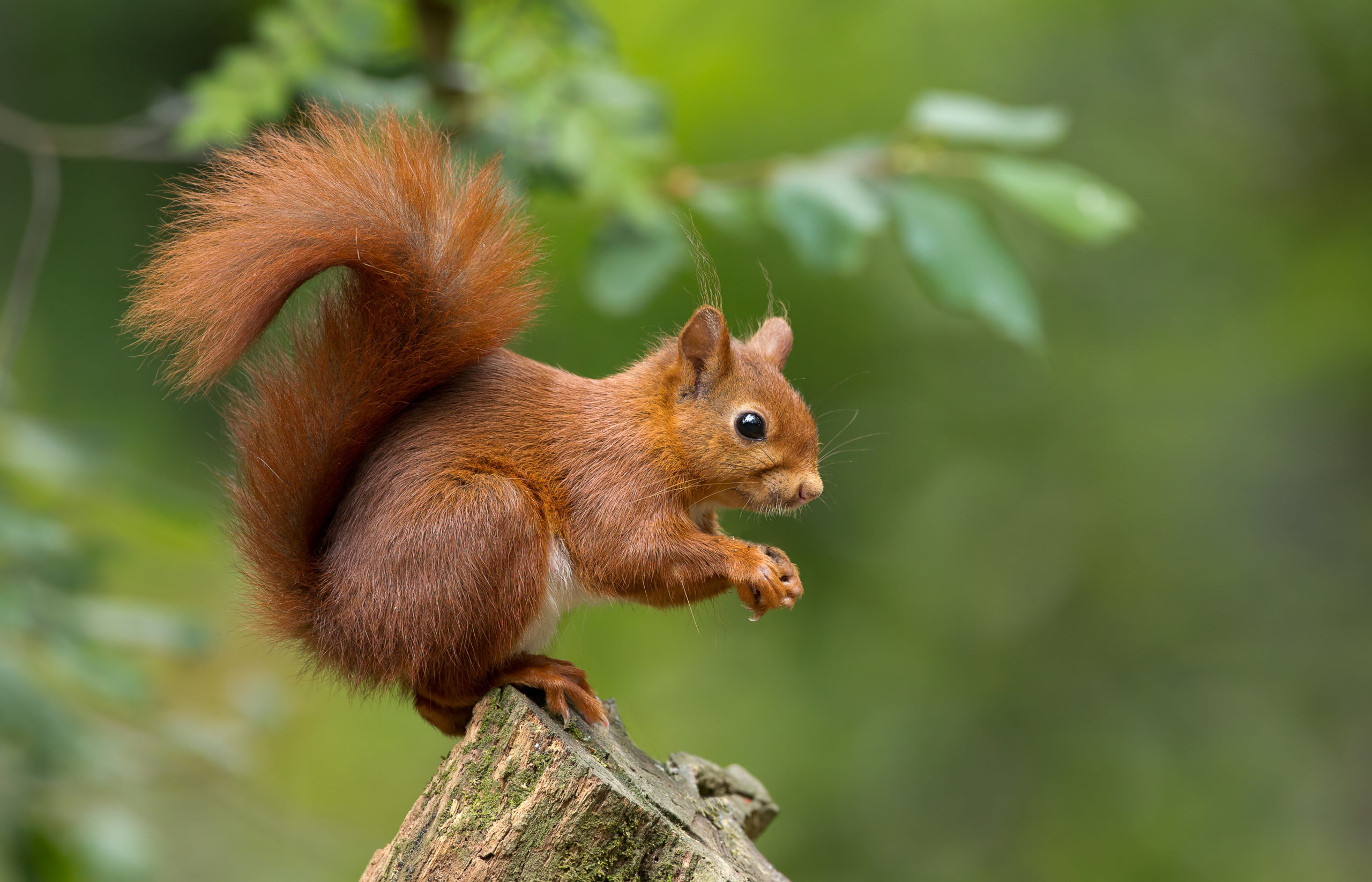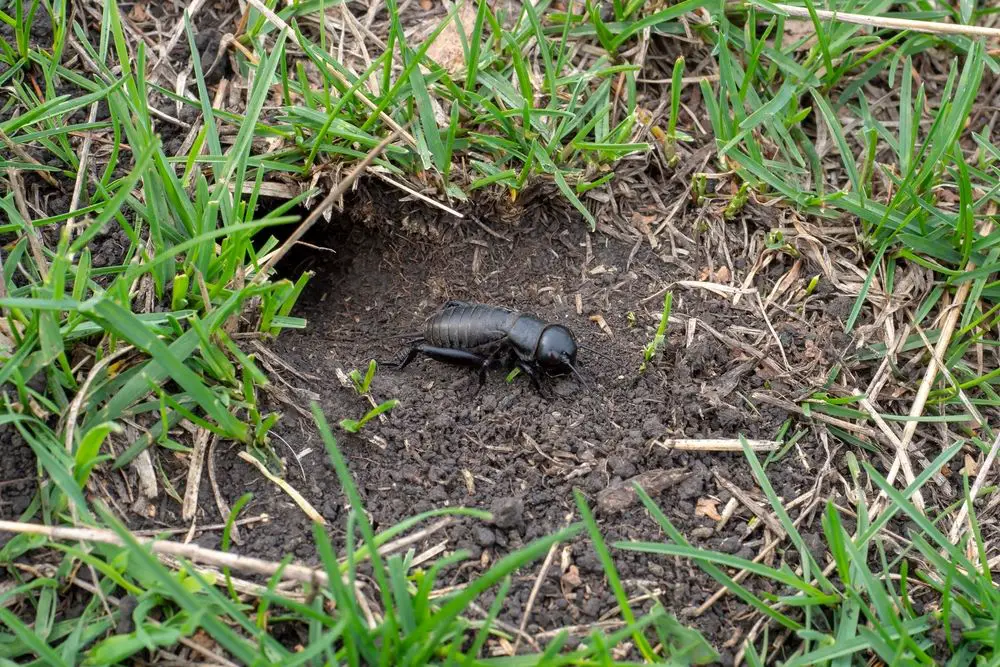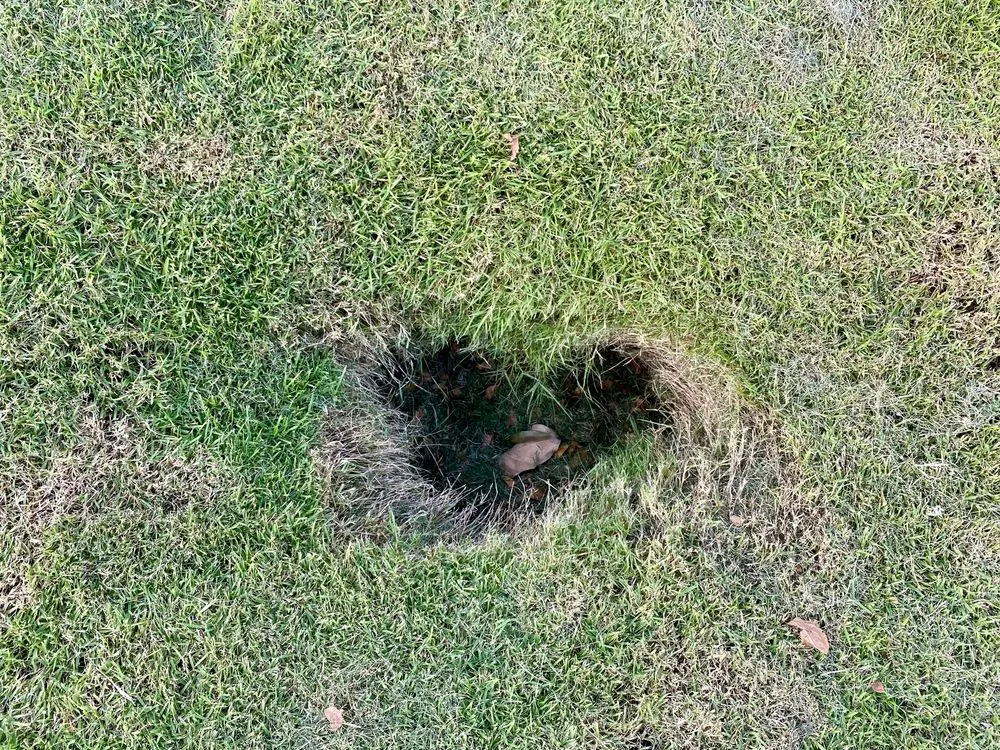The discovery of several small holes in your lawn is one of the most distressing things that might happen to you.
Not only can minute holes indicate the presence of a possible insect infestation, but they also frequently disfigure and kill your grass before it can recover.
What Leads to the Formation of Small Holes in Lawns Overnight?
Holes in the grass may have been made by rodents such as moles, gophers, voles, or rats; nuisance insects such as ground wasps; or birds that feed on the insects that caused the damage, such as grackles.
To close holes in your yard, first, determine and address the origin of the holes, and then fill the holes with a mixture of topsoil and compost or sand, depending on your preference.
What caused these holes? There is a wide range of possible sizes for the burrows, ranging from very small for insects to very large for rodents.
To solve the issue, you must first determine the precise source of it, and then implement the proper solution, as described in the following section.
Your grass never sleeps. It makes use of the energy it obtained throughout the day to expand during the night.
Unfortunately, there are many bugs that don’t sleep either, even during the night.
There is a good chance that a small animal or bug is responsible for the pockmarks or holes that have emerged overnight on your grass that appear to have come from nowhere.
As they emerge, mature insects from their underground tunnels, the larvae of many species of insects will have bored holes in your grass before they emerge.
Animals will frequently dig holes in your garden to find worms or insects to eat.
The following are some of the most prevalent causes of tiny holes appearing overnight on your lawn:
Squirrels And Chipmunks

Squirrels make holes in the ground in yards and bury nuts there for future consumption. If you wake up to discover a lawn full of tiny holes, it’s probably because an Eastern Gray Squirrel has been digging them.
These holes are typically around 2 inches broad and just a few inches deep, and there are no mounds of earth surrounding them.
Nutsedge weeds can also cause squirrels to dig holes to gain access to the tubers that they produce and eat.
On the other hand, chipmunks will construct tunnels and tiny burrows to conceal themselves from potential threats.
The areas in your yard that have structures, stumps, and log piles are the most likely candidates for chipmunk burrows.
If chipmunks and squirrels are causing problems on your property, you should go to a professional that specializes in wildlife and pest control.
Moles
Moles are rodents that live in the soil and consume soil creatures such as grubs and earthworms. They create tunnels approximately 10 inches deep beneath the surface of your yard.
On the other hand, mole tunnels in the yard rarely have entrances and instead have volcano-shaped earth mounds that are up to 24 inches high concealing the apertures.
These creatures seldom show up in backyards unless they are looking for a partner to breed with.
Therefore, if you see holes and dirt mounds in your yard after you’ve been away for the night, moles may be to blame.
If you want to stop moles from digging up your grass, you can get some natural repellents like the Natural Elements Mole and Vole repellent.
If the problem continues, you may try planting natural repellents in your yards, such as alliums, marigolds, daffodils, shallots, fritillarias, or garlic.
Insects

Certain insects spend the winter underground and come back to the surface in the spring.
This takes place when the insects are in the larval stage of their life cycle, and as they mature into adults, they might leave behind little holes in your yard. Cicadas and Japanese beetles are two good examples of this.
The cicada killer wasp and the scollid wasp are two types of wasps that are known to dig little holes in yards, particularly in areas where the grass is cut short, and the earth is exposed.
To deposit their eggs, scollid wasps create tiny holes in the grass, whereas cicada killer wasps create holes in the ground and bury dead cicadas beside their eggs.
These cicadas will provide the wasps’ offspring with food after the eggs hatch.
Ants and termites are two more types of insects that are capable of creating microscopic holes in the grass. You won’t need to take any action to treat or manage these pests until there is significant damage to your lawn.
The presence of some insect activity in the yard is otherwise considered to be typical.
Voles
Voles are another type of rodent that is capable of destroying your grass overnight by digging little holes, but thankfully, their existence can be identified by watching the traits that they exhibit.
Be on the lookout for rat droppings beside a path of dead grass or grass clippings that have been nibbled, since these are possible signs of voles living in holes in your yard.
In addition, voles’ burrows may be inhabited by field mice; you can tell if this is the case by examining the droppings left behind by the voles. The droppings of a field mouse are generally oval.
Earthworms
These segmented, tube-shaped, legless worms can be found in the soil of a healthy yard. They are the ones responsible for creating the narrow tunnels, particularly in moist soil.
They are necessary microorganisms that aid in the mixing of the soil with air, water, and nutrients. Additionally, when they feed on the soil, they create tiny holes that assist aerate the lawn.
If there is a significant population of earthworms on your lawn, you will notice that there are a lot of little holes with tiny granular pellets scattered throughout the grass.
Resultant of the warm temperatures and the damp soil, earthworm holes tend to appear more often in the autumn and spring seasons. These seasons provide circumstances that are favorable for earthworm activity.
Because of their positive effects on ecosystems, earthworms should not be killed. However, if the mud castings spoil the appearance of your grass, you should wait for them to dry and then brush them away.
In addition, save the grass clippings from your lawnmower to reduce the amount of earthworm activity in your yard.
Beetles
There are many different kinds of beetles, but the Japanese beetle is a particularly bad problem for your garden or lawn. These insects produce larvae, which are known as grubs, by laying eggs, which they then buried in the ground.
The grubs grow into beetles by spending the early fall and winter in the soil, and by the early summer and spring, they will have emerged from the earth.
At this point, you will begin to see that small holes are appearing in the grass as they emerge from the earth.
In addition, grubs are responsible for further issues in the yard because other animals, such as raccoons, birds, skunks, armadillos, moles, and wasps, attempt to eat the larvae. As a result, it is prudent to keep them under control to preserve a lawn that is lush and healthy.
You may require the use of pesticides to get rid of the beetles and their larvae that are found in your yards.
Preventing Animals From Digging Holes in Your Lawn
It is one thing to identify the species of animal that is responsible for digging holes in your lawn overnight; it is an entirely other matter to discover an acceptable remedy.
When it comes down to it, animals will continue to frequent your yard if it is attractive to them and provides both food and shelter for them.
As a result, you should take the following steps to ensure that rodents and insects will not find your yard appealing.
1. Eradicate Grubs
Grubs are consumed by most animals, including birds, moles, and armadillos; therefore, if there are grubs present on your lawn, these species will continue to visit.
Because grubs begin their feeding in the garden during June, this is the best time of year to get rid of them.
Increasing the number of beneficial nematodes in the soil will reduce the number of grubs in the soil, which will in turn reduce the number of food sources for the animals.
2. Use of Animal Repellents
Animal repellents are one of the most efficient ways to stop animals from digging holes in your yard, and there are many different solutions available on the market.
Castor oil-based repellents are the most traditional option available on the market, and it is safe to use these repellents around both children and pets.
Garlic powder and used coffee grounds are examples of common home goods that may be used to successfully deter rats from damaging your grass.
3. Plant Seed Consistently
If you seed your yard, you will end up with grass that has strong roots and is less likely to be damaged by animals on their hunt for food or a place to hide.
4. Humane Traps
One further method for preventing animals from entering your property is to capture them in a trap and then release them some distance away.
Make sure that you always utilize humane traps to prevent inflicting pain on the animals and provide them with incentives like food to lure them into the trap.
The size of the animals will also determine the type of trap that will be most effective in accomplishing the task. For instance, raccoons call for the use of more substantial traps.
5. Obstacles of a Physical Nature
These animals can be kept at bay with the use of a chicken barrier or a chain-link fence. This strategy requires a lot of effort, but it might drive animals away, which would force them to look for other places to find food and shelter.
How Should Holes in the Grass Be Filled?
Now that you understand what causes the holes in the ground, it is time to fill up the holes and restore the beauty of your grass.
Not only does having holes in the lawn make it seem unsightly, but it also puts the safety of the family’s children and animals in jeopardy.
How you fill in those holes in the grass is going to be determined by both the size of the holes and the number of holes you have.
If there are just one or two minor holes, you may simply acquire some topsoil or even dirt and place it into the hole.
If there are more than two holes, however, you will need to find another solution.
Try walking on it and exerting pressure with your foot to firmly establish it.
Finally, you may rake the dirt that has become spread back into the divots in the grass.
The most straightforward approach to repairing the damage caused by bees, chipmunks, and squirrels is most likely to include the addition of soil.
If you want to prevent the animals from coming and digging the soil back out, the best technique to fill in these specific holes is to use a heavier substance because this will discourage infiltration from your enemies!
Cat litter, fine gravel, and heavy clay soil are all fantastic options for filling in these holes since they provide different textures and densities.
Final Thoughts on Small Holes in Lawn Overnight
Next time a visitor remarks on the flat and even surface of your lawn, we guess this article gives you bragging rights… especially if it’s a fellow gardener!
Spread the love!
Read More:
12 Tips to Get Rid of Grub Worms on your Lawn 
Putting Salt on Grass (What you Need to Know!)
How Many Square Feet are on a Pallet of Sod? +Sod Calculator

